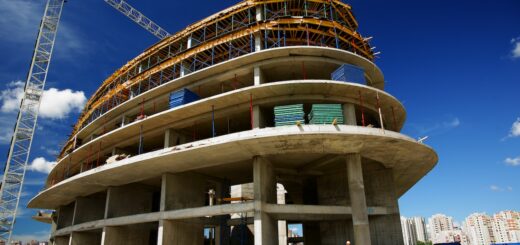6 Factors Affecting Curing Time of Concrete
What is Curing?
Curing is usually know as adding the water to the concrete not allowing it is getting dry during the specified curing time of concrete.
This is correct?? .. No.
It is not correct.
Curing is a different thing that has substantial benefits. It is not required always to add water. There are different methods for curing of concrete.
Let’s discuss, the advantages of the curing before discussing the curing time of the concrete.
- Curing of the concrete increase the moisture content on the surface of the concrete and it provides an adequate supply of moisture for the hydration process. As a result, compressive strength will improve.
- It reduces the permeability of the concrete and as a result resistance to freezing, salt scaling and attack by chemicals will improve.
- Improve the durability of concrete
- It enhances the serviceability
- It improves the microstructure
- Minimis or avoid the plastic shrinkage cracks caused by rapid surface drying
- It increases the abrasion resistance
- Colour of the surface becomes uniform
There are some issues connected with the improper curing
- Water applied to the concrete could have harmful chemicals such as chlorides. Therefore, due attention shall be made on the quality of the water.
- Due to the unawareness, some workers used seawater for curing which result is in durability problems.
- Compressive strength could be lower than the anticipated value
- Concrete can be cracked due to plastic shrinkage, drying shrinkage and thermal effects.
- Rate of carbonation could increase
The article was written as the role of concrete curing elaborate more information on curing techniques.
Effect of Curing Time of Concrete
When to start curing and when to stop curing is the biggest problem.
Actually, it depends on many factors.
The period of curing is significantly affected by the strength of the concrete and other properties of the concrete.
The followings are some key factors related to moist curing
- Concrete allowed to dry out immediately achieves only 40% of the strength
- Three days curing increases the strength by 60%
- Seven days curing increases the strength by 75%
- 28 days curing increase the strength by 95%
Thus, it is very clear that the retention of moisture has a significant impact on the final strength of the concrete as indicated in the following figure. In addition, there are other factors to be considered in selecting the period of curing.
Why should Start Curing Immediately?
Factor affecting Curing Time of Concrete
- To avoid premature drying out especially from wind and solar radiation
- To avoid leaching out rain and flowing water
- To avoid rapid cooling after the first few days of placing
- To reduce high internal thermal gradients
- To avoid low temperature or frost
- To avoid vibration and impact which may disrupt the concrete and its interface with its bond to the reinforcement
Therefore, curing shall be started immediately. However, the time of staring could depend on the method of curing and type of concrete.
For example, in a large concrete, if we need to lay a polythene sheet or any membrane, we have to wait until the concrete get harden to a level that we can work on it.
The following table exacted from BS 8110 indicates the minimum periods for curing. Further, it states that no part of the surface of the concrete shall below a temperature of 50C.
As indicated in the table, depending on the type of cement period of curing can be selected.
Further, the scale of the project and the rates of achieving the strength by concrete could also be taken into account when the final dates are selected.






